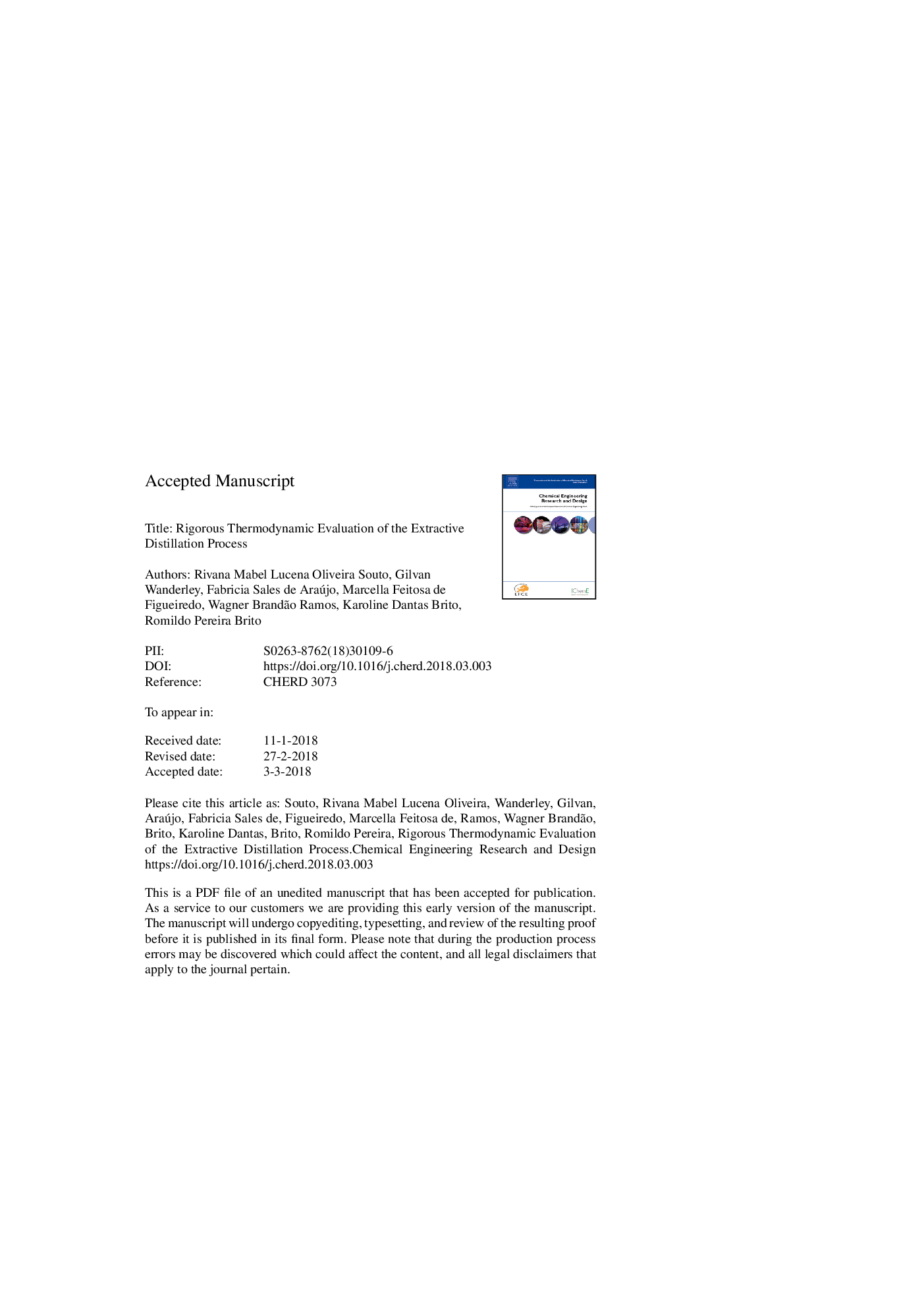| Article ID | Journal | Published Year | Pages | File Type |
|---|---|---|---|---|
| 7005924 | Chemical Engineering Research and Design | 2018 | 23 Pages |
Abstract
The extractive distillation process has received special attention from researchers due to its high energy consumption and low thermodynamic efficiency. However, the thermodynamic performance has been approached in the literature in a superficial way and it is common to affirm that intensifying processes increases the thermodynamic efficiency without presenting quantitative results. The main objective of this work is to determine the operational conditions that result in maximum thermodynamic efficiency of the extractive distillation process (global optimum). Thus, the process was divided into three blocks in order to identify the irreversibility sources. The results show that the use of a solvent to enable the separation is the main cause of the low thermodynamic efficiency of the extractive distillation process, and depending on the chemical system and the operating condition, negative values ââfor the extractive column are observed. In order to make the thermodynamic analysis more didactic, a methodology to calculate the individual and overall lost work is proposed, which allows for identifying and quantifying, as well as where to act in order to increase the thermodynamic efficiency of the separation. The azeotropic binaries used as case studies consisted of ethanol (ETOH), water (H2O), acetone (ACET) and methanol (METOH), while the solvents used to promote separation were ethylene glycol (EG) and dimethyl sulfoxide (DMSO), respectively.
Related Topics
Physical Sciences and Engineering
Chemical Engineering
Filtration and Separation
Authors
Rivana Mabel Lucena Oliveira Souto, Gilvan Wanderley Farias Neto, Fabricia Sales de Araújo, Marcella Feitosa de Figueiredo, Wagner Brandão Ramos, Karoline Dantas Brito, Romildo Pereira Brito,
